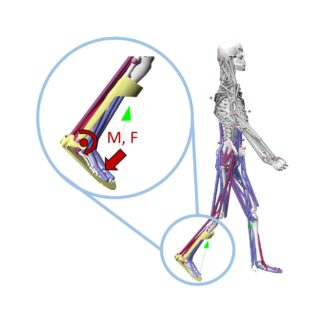Modelling the interaction between wearable assistive devices and digital human models

Wearable assistive devices, such as exoskeletons or orthoses, are products that support or protect people by force transmission. For their design, digital human models are increasingly used, as they allow evaluation of the biomechanical effects on the human body. The main factor for efficient human assistance is the interface between the assistive device and the human, mainly consisting of the biological soft tissue. However, the soft tissue is mostly not represented in digital human models. Therefore, in the latest publication of the KTmfk, a systematic literature review was conducted with the aim to identify possibilities for interaction modeling between wearable assistive devices and digital human models, with a special focus on how the influences due to the biological soft tissue are taken into account in the simulation.
https://doi.org/10.3389/fbioe.2022.1044275